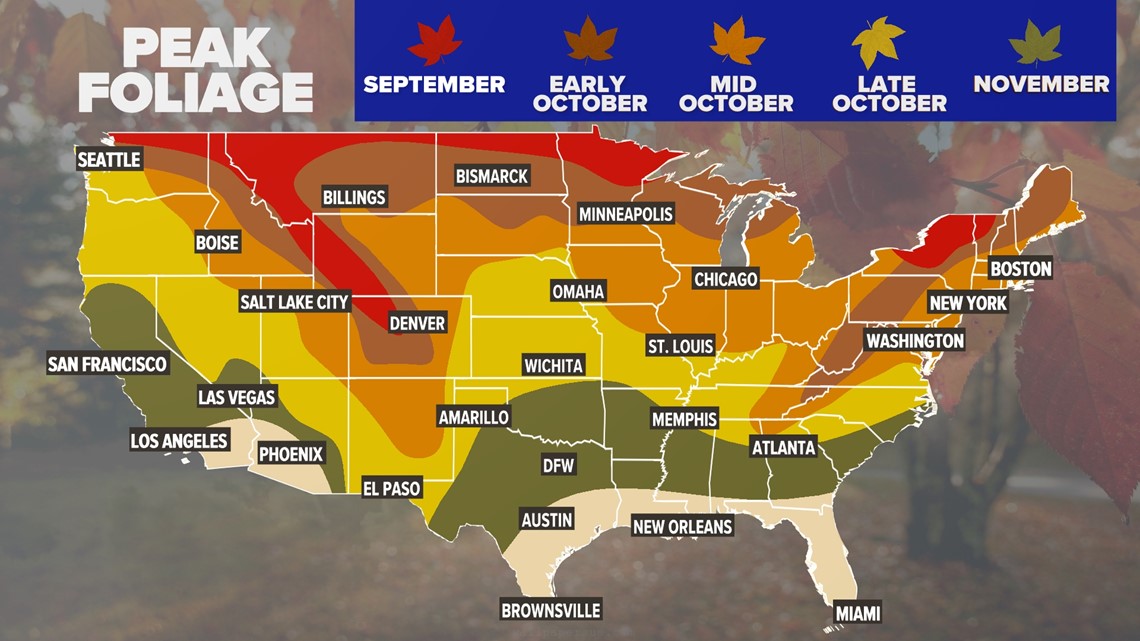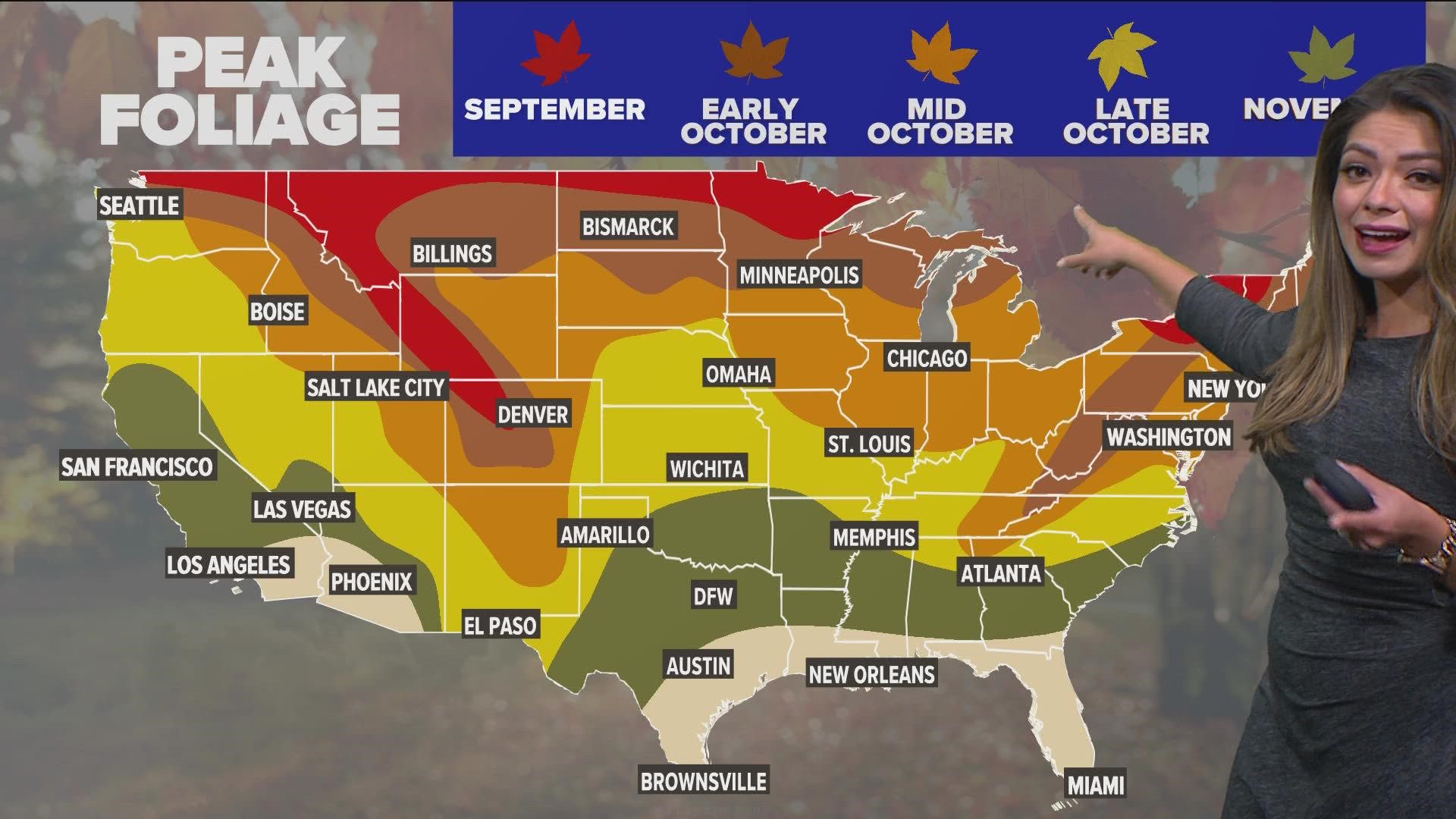DALLAS — It is that time of the year! Fall fashion, foods, pumpkins and harvest festivals are in full swing, but our plants have not gotten the memo! What gives?
It is still a bit early to see many changes across North Texas, but some fall colors are definitely being spotted across the northern part of the country.
Why the change?
Fall equinox signals shorter days and longer nights. The lower levels of sunshine triggers plants to slow or even halt chlorophyll production. Chlorophyll is the green pigment that moves through leaves veins giving most plants the green hue. When this pigment is no longer being produced, the leaves' natural colors shine through. The yellows, oranges, and reds vary depending on the type of plant.
Why don't we always see the change?
Weather through the year is a big driving force behind the vibrancy of each color. Temperature and soil moisture are the two biggest factors.
In order to see the best colors a combination of warm days and cool nights are ideal. An early frost can quickly bring the fall color change to a screeching halt.
Another big factor is the rainfall during the growing and fall seasons. If there is not enough rainfall for the plants, it will cause the plants to shed leaves before given the opportunity to change colors.
How does this year look?
Not the best. Our temps have been mild over the last month with coolish nights and sunny, warm afternoons. An early freeze is not likely with an outlook of warmer than normal temps ahead.
Our drought may be our demise. Portions of Texas are experiencing the worse drought in over a decade. Every month, with the exception of August, has reported below-normal rainfall.
If leaves do not prematurely fall, our peak fall color for 2022 happens between Oct. 31 and Thanksgiving.



